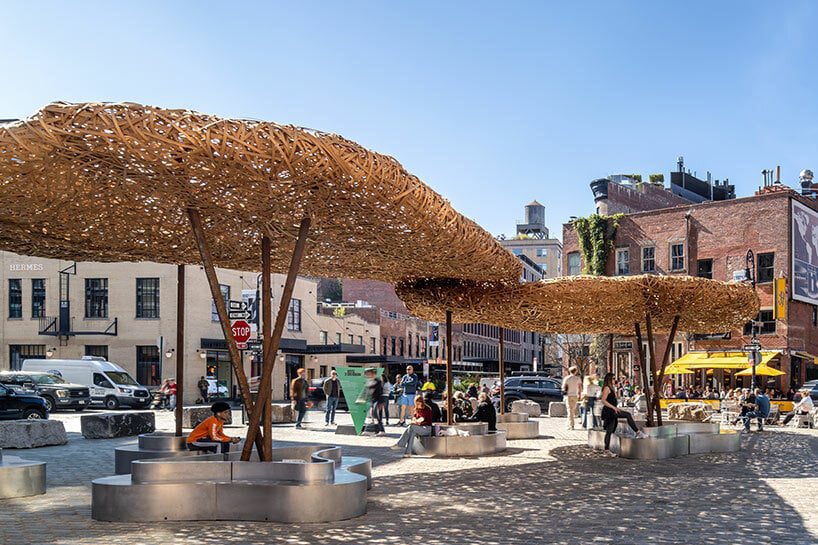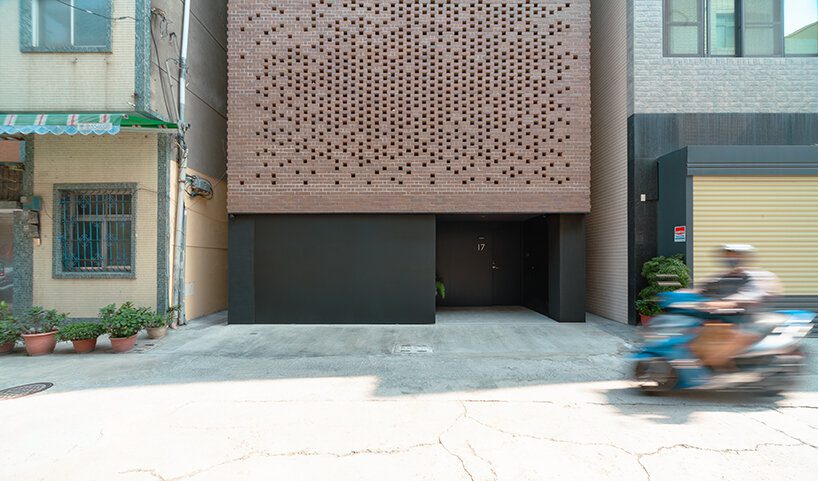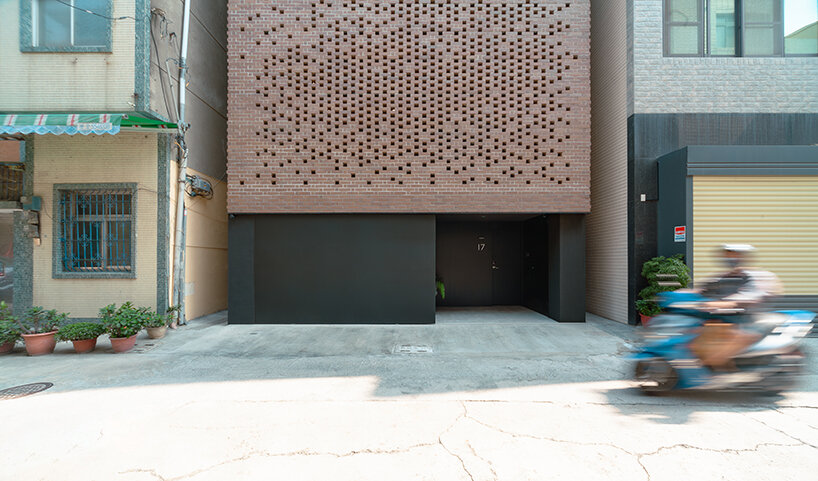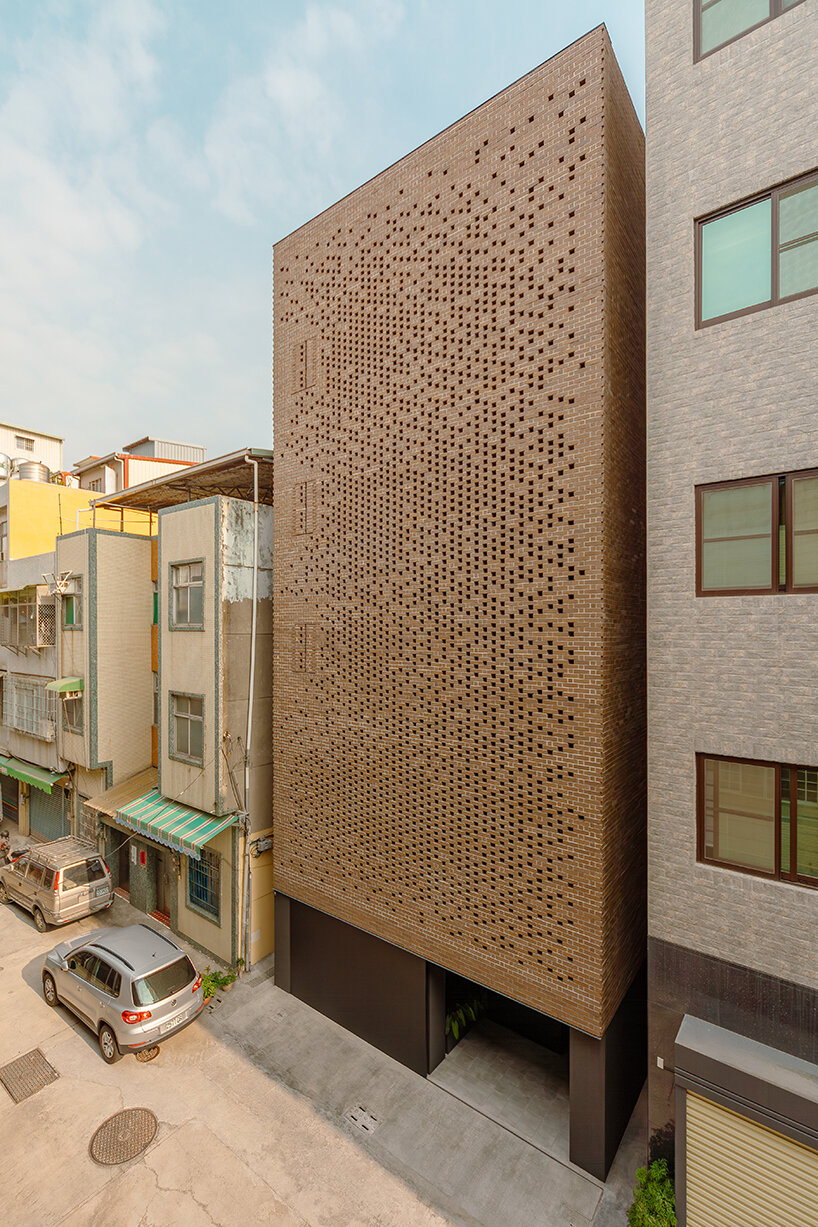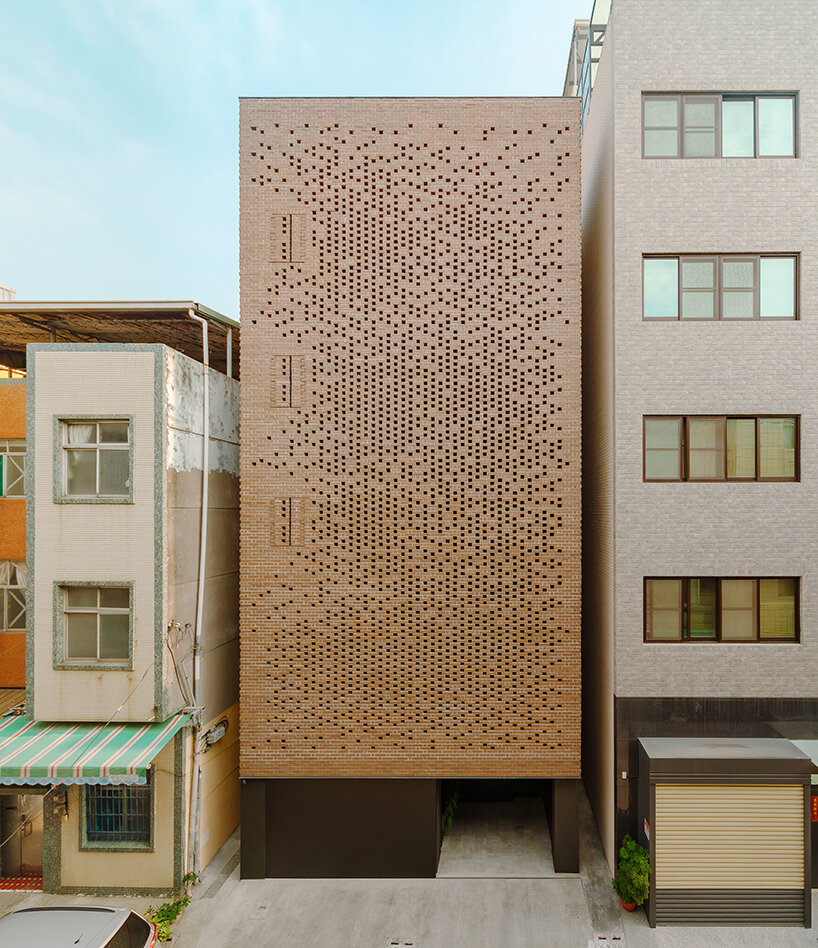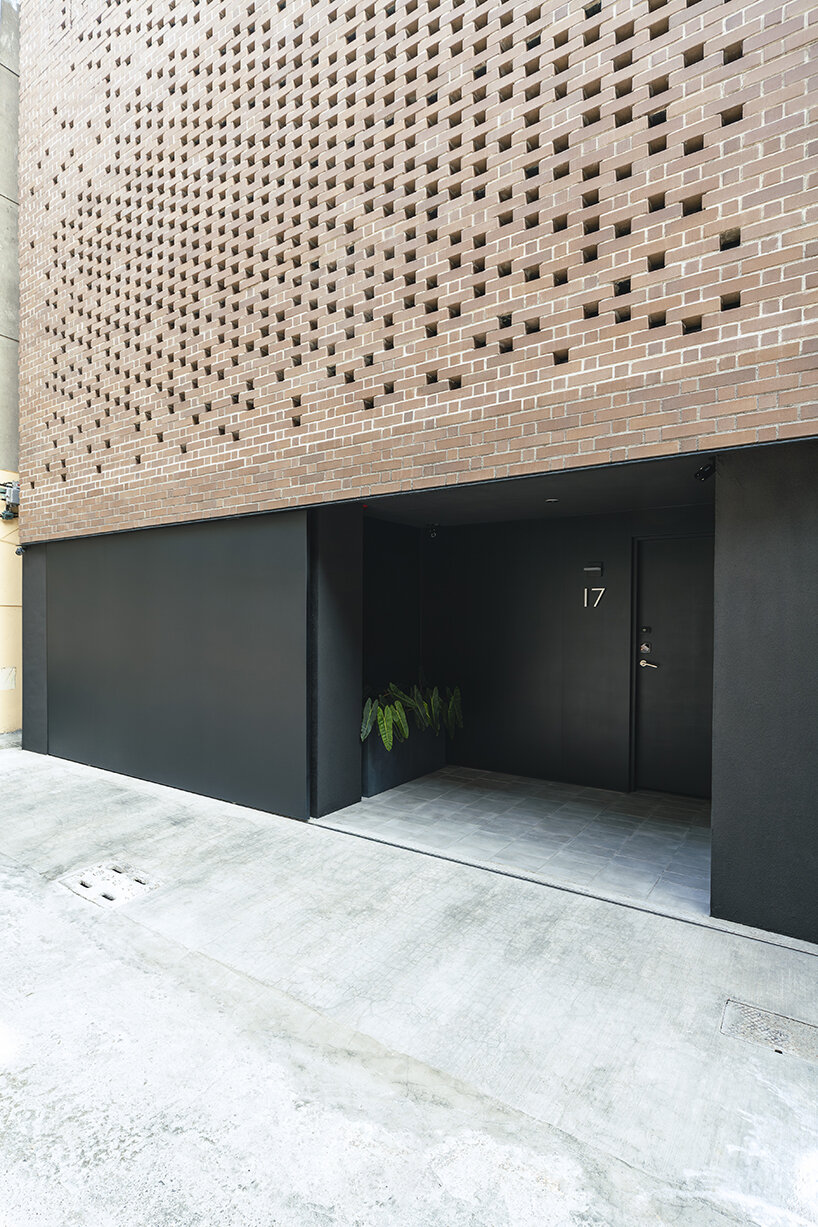llLab weaves ‘bamboo cloud’ pavilion to float over lower manhattan
design pavilion 2023: reviving traditional craft
This year’s Design Pavilion for NYCxDESIGN included an experimental installation dubbed Bamboo Cloud, designed and crafted by Shanghai-based architecture studio llLab. The lightweight structure appeared to float over Gansevoort Plaza in New York‘s Meatpacking District from October 12th through 18th during Archtober 2023. Bamboo, a versatile and sustainable material, has been an integral part of architectural history for centuries. Primarily embraced in Asian and African regions, this resilient resource has been employed for a boundless number of architectural applications. From woven mats and panels to split strips for shingles and siding, to entire bamboo culms used for structural elements like columns, beams, and rafters. This rich tradition of bamboo architecture serves as the foundation for the Bamboo Cloud, which arrived this month in New York City.
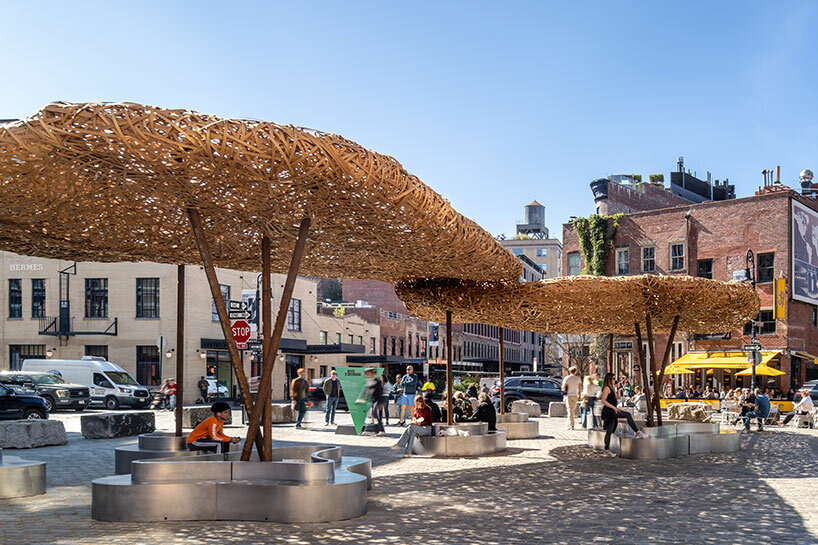 images © Xi Chen + Chris King
images © Xi Chen + Chris King
lllab weaves lightweight ‘clouds’ from bamboo
With Bamboo Cloud, the architects at llLab have taken the material to new heights, exploring an application that pushes the boundaries of what it can achieve. Bamboo’s strength and lightweight properties make it ideal for sustainable design innovations. The Design Pavilion for NYCxDesign exemplifies this potential in architecture. Composed of two amorphous ‘clouds’ constructed entirely from bamboo and supported by structural columns, the bamboo is intricately woven to form a porous surface that shelters a light and ethereal environment, ideal for relaxing and gathering in the city.
Bamboo Cloud is softly illuminated from within, as well as from below — thanks to a collaboration with architectural lighting design firm L’Observatoire International and lighting suppliers Nanometer Lighting Color Kinetics.
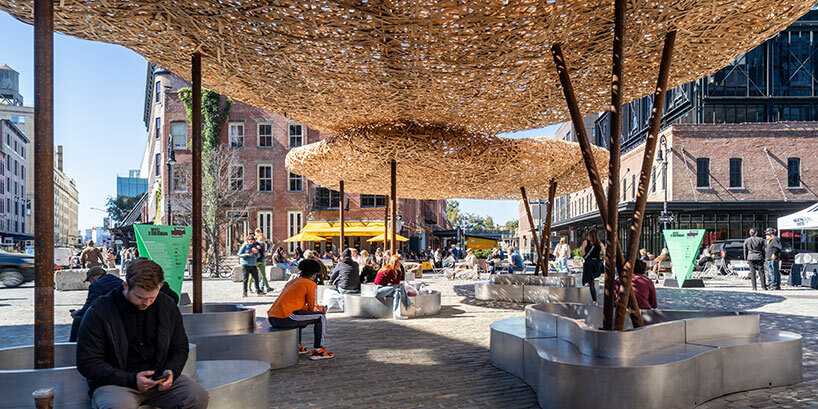
the Bamboo Cloud pavilion exemplifies the material’s versatility in New York City
from guilin to new york
The Shanghai-based team at llLab has been challenging the traditional applications of bamboo long before this Bamboo Cloud arrived in New York. The team had explored the material’s potential with a similar installation which, in 2020, occupied the dramatic, forested landscape of Guilin, China. see designboom’s coverage here!
‘Bamboo is still relatively ambiguously defined, though bamboo has been applied in various aspects in the field of architecture. In terms of structural calculation and material properties, it can still only be compared with wood in the role of ‘engineered bamboo,’ for imperfect construction implementation,’ said Hanxaio Liu, Founding Partner of llLab. ‘However, the Bamboo Cloud intends to unify original bamboo and engineered bamboo in terms of materials and applications, as well as their properties and physical presentation.’
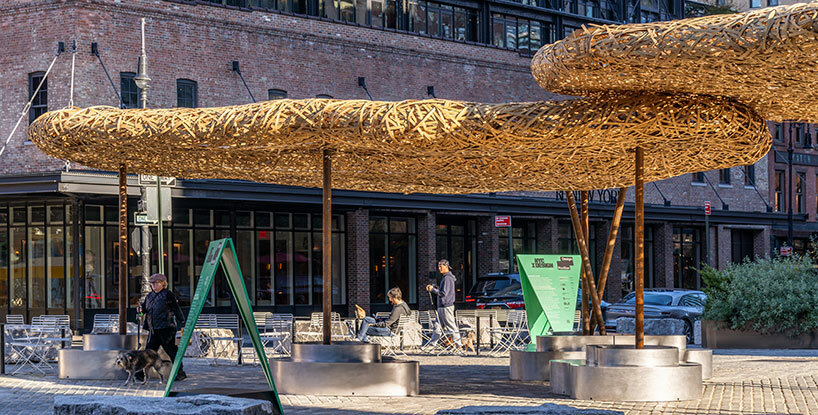
two bamboo ‘clouds’ shelter an open-air space for relaxing in the city
Hanxaio Liu continues: ‘Bamboo Cloud focuses on the relationships between inherent material properties and their potential applications beyond convention. Bamboo has been mainly applied on the scale of handcraft, followed by the recent popularization of its utilization in sustainable buildings. However, the advantage of utilizing bamboo has not been thoroughly understood, so most applications have remained superficial.’
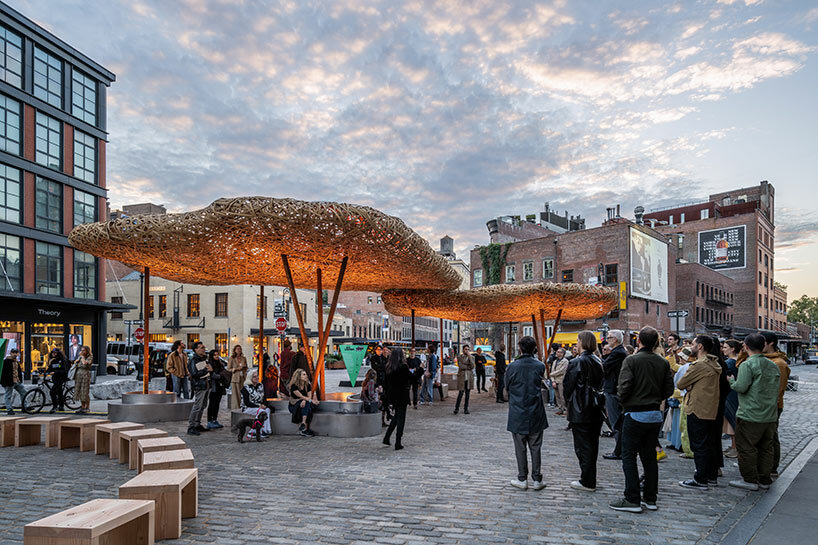
bamboo’s renewable nature makes it an environmentally responsible choice 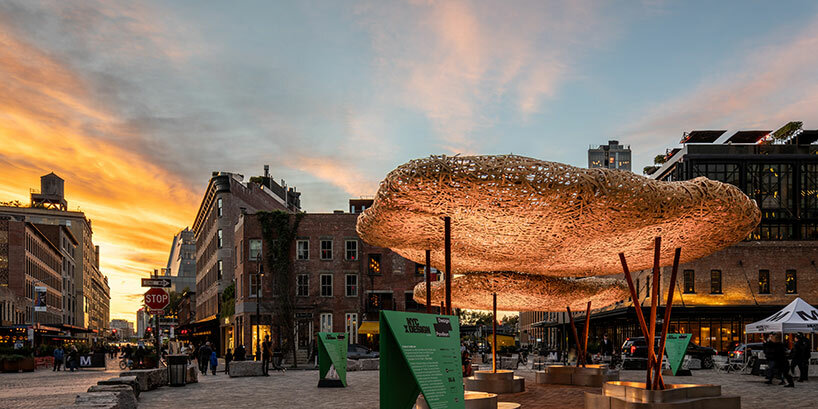
the Design Pavilion represents a vision for a fresh, sustainable future in architecture

